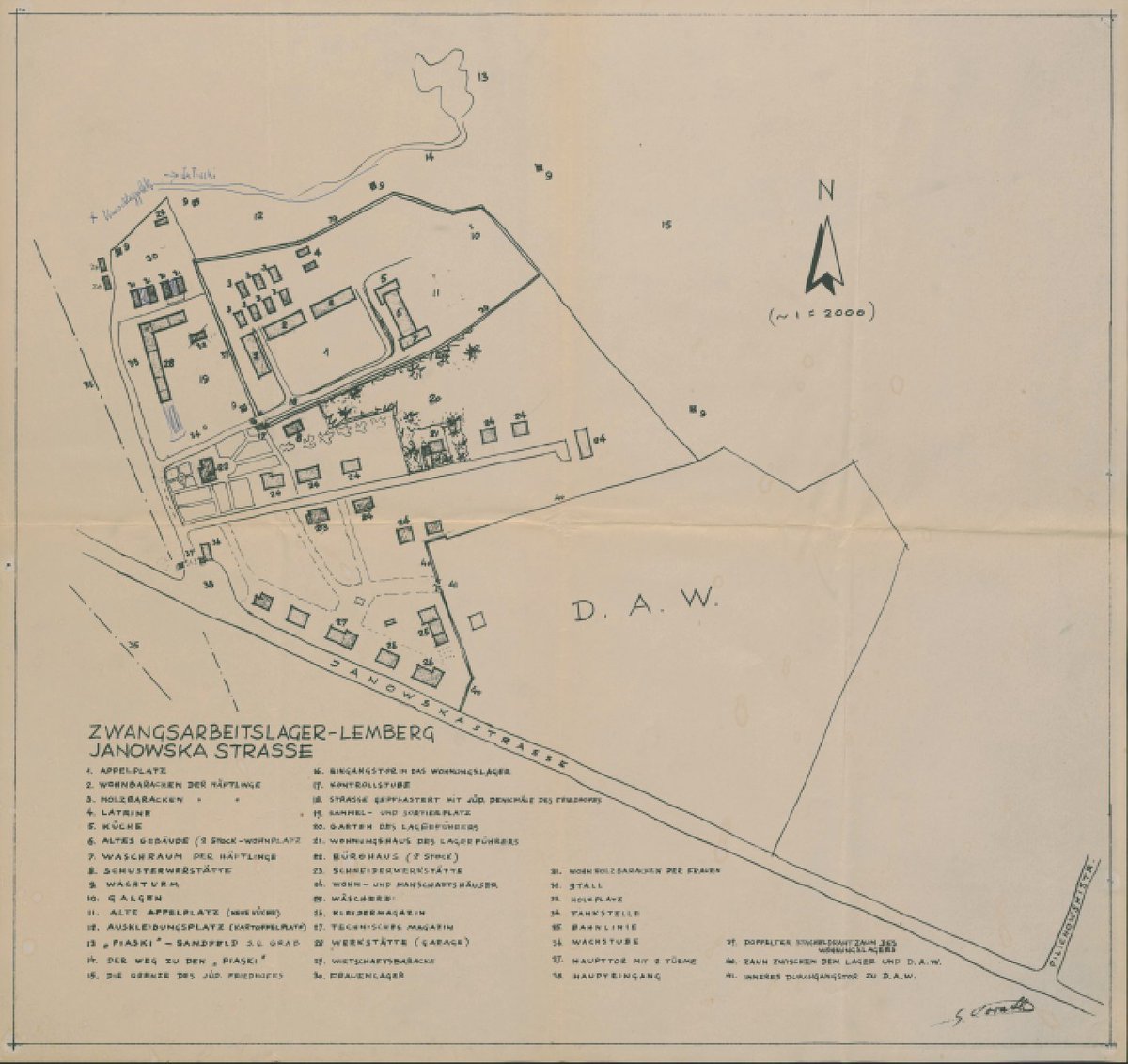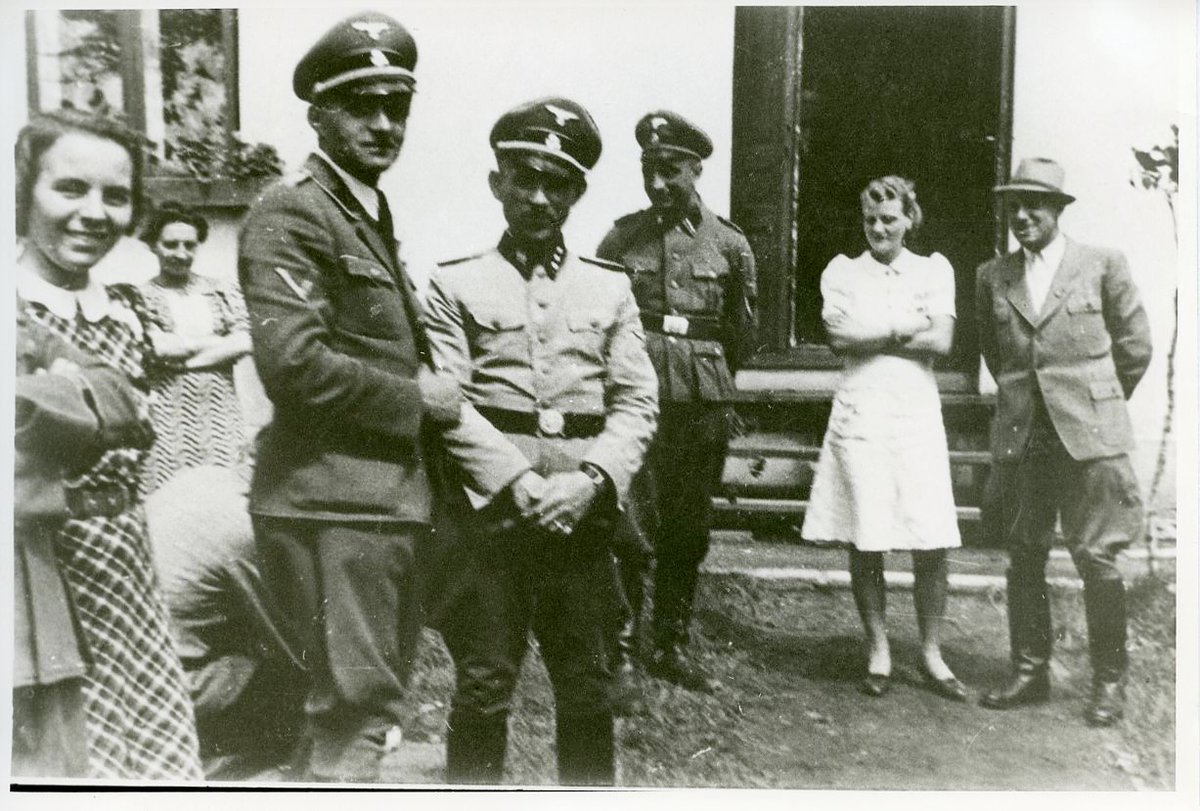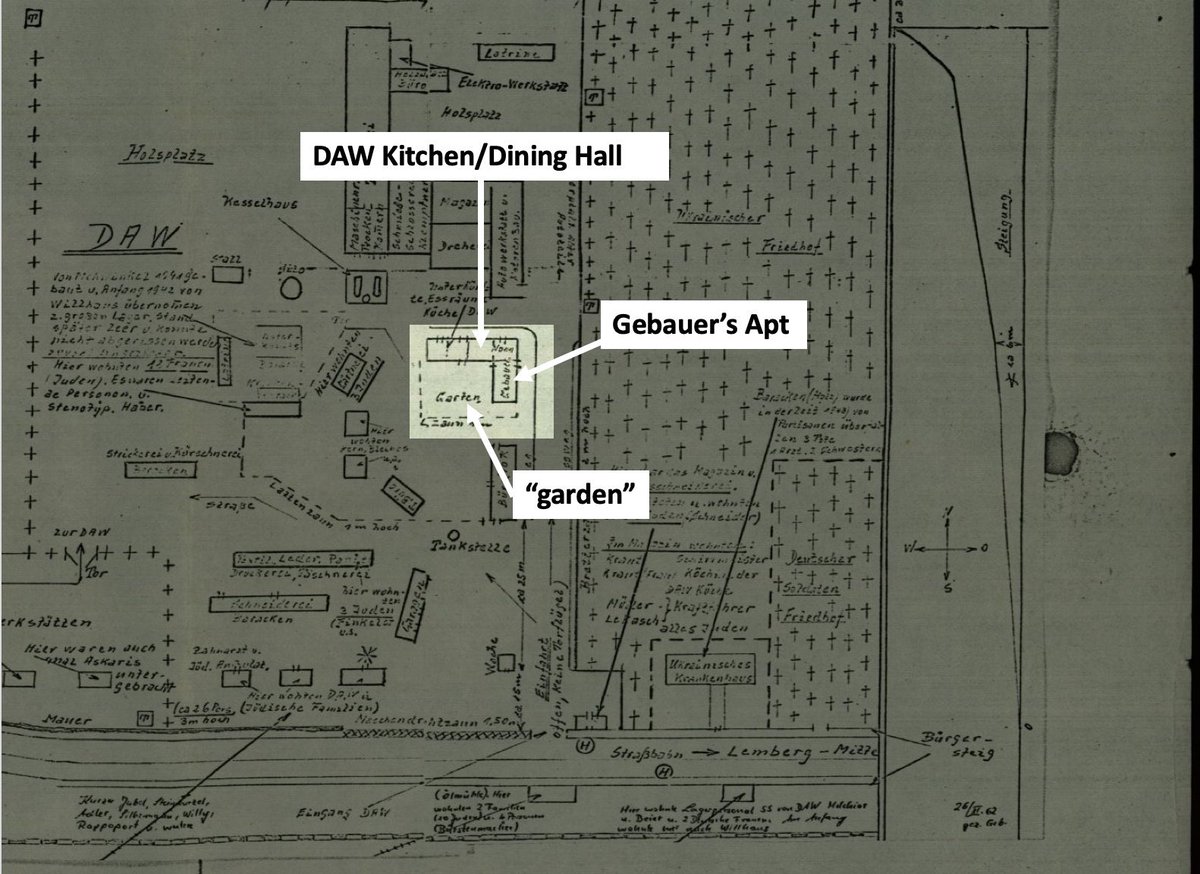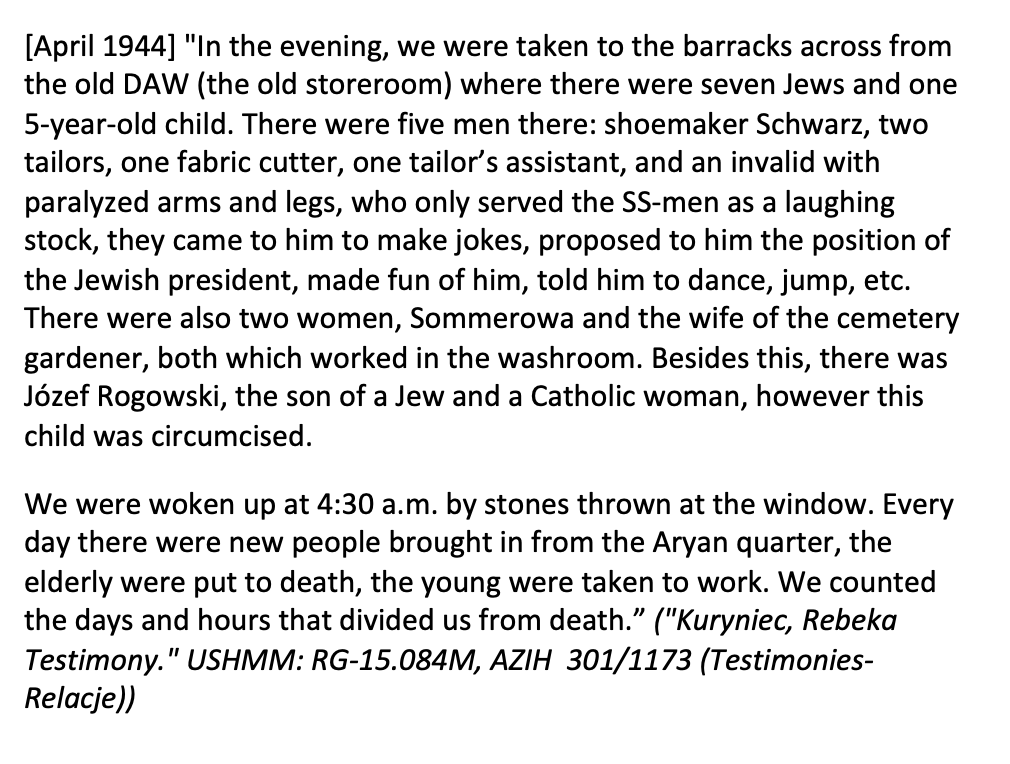[Thread] I've been inspired by a couple things this week to share a piece of my current book project on the Janowska concentration camp outside of Lviv, Ukraine.
In particular, it deals with these two photos (but I will come back to them.)
In particular, it deals with these two photos (but I will come back to them.)
First was the piece by @SarahEBond and @TheTattooedProf on the value of public outreach. Building off that, not enough of us share the results of our research at stages prior to publication...even though it can still be fascinating. https://www.chronicle.com/article/Public-Writingthe-Junior/247342
Second, I was also inspired by the overwhelming response to @McKayMSmith's thread on the Höcker album which seems to show that many people are interested in the complex lives of #Holocaust perpetrators.
https://www.ushmm.org/collections/the-museums-collections/collections-highlights/auschwitz-ssalbum/album
https://www.ushmm.org/collections/the-museums-collections/collections-highlights/auschwitz-ssalbum/album
Thirdly, I didn't realize the implications of the #DigitalHumanities side of my work on these photos until I started describing them in my book manuscript. I thought the convergence of sources and digital methodologies might be interesting to some. (Hopefully)
Lastly, as a public-facing historian inspired by the work of @KevinMKruse, @KevinLevin, and so many other #Twitterstorians who employ the long-form thread as a way of reaching a broader audience, I just wanted to share what this historian has been up to.
So, my next book project is on the Janowska camp. (For an overview of the camp and the project, see below.)
https://waitmanbeorn.wixsite.com/waitmanwadebeorn/janowska-project
https://waitmanbeorn.wixsite.com/waitmanwadebeorn/janowska-project
For a more in-depth discussion, see... https://academic.oup.com/hgs/article-abstract/32/3/445/5198995?redirectedFrom=fulltext
As I am writing a chapter on the early days of the camp, I wanted to talk about the lives of the perpetrators (after I had discussed conditions for prisoners.) I have two photos taken in the camp between March and May 1942 which seemed to provide a window into those lives.
The earliest part of the camp was the Deutscheausrüstungswerke (DAW) or German Equipment Factory (a slave labor concern run by the SS). A later camp was added to create the whole complex, seen here in a survivor's rendering.
Photo 2
(They were provided by Hugo Bleines- in fedora, sports coat, and high boots- as part of a post-war trial.)
(They were provided by Hugo Bleines- in fedora, sports coat, and high boots- as part of a post-war trial.)
There is some disagreement between Bleines and another Nazi witness as to who is who in this photo so I won't comment on everyone at the moment. However, there are lots of very interesting things going on here.
All the information I am adding about these photos comes from survivor and perpetrator testimony, maps, memoirs, and other archival sources that together begin to present a composite picture of life and death in the camp.
Photo 1 shows members of the camp staff including the commandant, Fritz Gebauer, and Bleines, a civilian who was in charge of the carpentry shop and later Gebauer's deputy. With Bleines in the white dress is his wife. At the far left of the photo is the wife of another Nazi.
Gebauer was a brutal murderer who particularly enjoyed strangling prisoners. He was incredibly ambitious but only marginally competent and took out his own insecurities on the prisoners. But this is not what is fascinating about this photo.
One of the Nazi guards identified the woman with her arms crossed in the background as a "Jewish cook." That would be a camp prisoner. This makes sense because Bleines noted that the photo was taken near Gebauer's apartment and the staff kitchen.
If this is correct, it speaks volumes to the attitude these men had towards their job and the prisoners. It is also oddly evocative of pictures of life in the antebellum South where slaves are included in family pictures without any apparent thought.
(There is a striking similarity here with this image from Smith's Fort plantation from Bruce Levine's "Fall of the House of Dixie)
https://www.nhpr.org/post/fall-house-dixie-built-new-us#stream/0
https://www.amazon.com/Fall-House-Dixie-Revolution-Transformed/dp/0812978722
https://www.nhpr.org/post/fall-house-dixie-built-new-us#stream/0
https://www.amazon.com/Fall-House-Dixie-Revolution-Transformed/dp/0812978722
Gebauer's wife, Emmi, supervised the staff kitchen and dining area and as a result likely also directly supervised concentration camp prisoners. She was paid directly by the SS office that paid her husband.
Notice the nicely-painted white buildings and flower boxes. The staff clearly wanted to make this THEIR space, an intent that comes through particularly well in photo 2.
Photo 2 provides us with a broader picture of this area, showing Bleines and his wife again as well as Gebauer's dog, Bully. We see the staff kitchen and dining room, laundry out to dry, a picket fence, grassy lawn, and two women relaxing in rocking chairs.
This tranquil scene would be disturbing regardless of location given the context of the time period and the people appearing. Yet, when we apply additional source material and digital approaches, this becomes even more disturbing.
Where exactly ARE these people enjoying what seems to be a leisurely afternoon? Well, we know that the war criminal Bleines told investigators that these were taken near Gebauer's apartment and the staff kitchen/communal dining area. But is he telling the truth?
If he is, what does this mean for our understanding of the attitudes of these perpetrators in a very specific place and time?
What was the SPATIAL meaning of this place for them and for us looking back?
We have to then try to actually locate this on the ground.
What was the SPATIAL meaning of this place for them and for us looking back?
We have to then try to actually locate this on the ground.
Fortunately, Gebauer himself drew a very detailed map of the DAW as part of his prosecution.
(Notice how he literally illustrates his supposed ignorance of the "other" camp with ????- to the left of the image)
(Notice how he literally illustrates his supposed ignorance of the "other" camp with ????- to the left of the image)
On his map, he labels the area described by Bleines.
(note the proximity of the Jewish cemetery- which prisoners from the camp were forced to destroy as marked by the crosses and duplicitously labeled "Ukrainian cemetery")
(note the proximity of the Jewish cemetery- which prisoners from the camp were forced to destroy as marked by the crosses and duplicitously labeled "Ukrainian cemetery")
This gives us a starting point. Fortunately, unlabeled in the U.S. National Archives, is a 1944 Luftwaffe aerial photograph of Lviv...
Placing the maps in their current spatial context is called "georeferencing" and it allows us to accurately overlay these historical documents on actual terrain.
With the incredible support of the @scholarslab, I created a proof of concept for a forthcoming 3D model of the camp. You will notice that the #DH folks there overlaid the aerial photo so that it shows the actual terrain. Take a look here: https://www.arcgis.com/home/webscene/viewer.html?webscene=e633540dfede4611b815228bda71a7e6&viewpoint=cam:23.98336719,49.84823187,792.998;32.225,57.603
So...let's return to the second photograph. Notice that photo in the background, of the building that looks like a barn, behind the laundry.
Already, it seems clear that this building in the immediate background of the idyllic SS afternoon is a prisoner barracks, a place of misery, suffering, and death.
Digital technology helps us even further here. If we return to the 3D model, its analytical tools come into play.
Digital technology helps us even further here. If we return to the 3D model, its analytical tools come into play.
Two measurements are important. Notice the distance from Gebauer's apartment and the kitchen to the barracks (53m, ca. 150ft). And notice that the barracks is about 10-15 ft higher than the living area.
Now, look at the photo and the brick retaining wall.
Now, look at the photo and the brick retaining wall.
And, so, after all this, if we return to the people in this photo (and those NOT in this photo), this gives us yet another example of the horrific normalization of violence, atrocity, and suffering that perpetrators and their families accepted.
I am not the first historian to point out the dissonance between perpetrators' behavior and their surroundings. Many commandants lived in close proximity to their "work." Rudolf Höss at @AuschwitzMuseum lived within sight of the first gas chamber and crematoria.
But I am always struck by the spatial elements of this relationship. The sights, smells, and sounds of these barracks in the DAW in Janowska must have been ever present. Perhaps even at the moment this photo was taken.
What did the men AND women of the camp staff make of their little oasis in the midst of all this suffering? In many ways, this and the similar, broader questions raised are what drive my research?
This has been a long thread, but, as always, I find that human nature becomes most evident at the scale where individuals live and interact.
I will close with a quote from the famous #Holocaust historian, Raul Hilberg.
(Thank you for reading.)
(Thank you for reading.)
Updated link to the project site: https://waitmanbeorn.wixsite.com/drbeorn/research

 Read on Twitter
Read on Twitter![[Thread] I've been inspired by a couple things this week to share a piece of my current book project on the Janowska concentration camp outside of Lviv, Ukraine.In particular, it deals with these two photos (but I will come back to them.) [Thread] I've been inspired by a couple things this week to share a piece of my current book project on the Janowska concentration camp outside of Lviv, Ukraine.In particular, it deals with these two photos (but I will come back to them.)](https://pbs.twimg.com/media/EHWkPXsX0AAJvLv.jpg)
![[Thread] I've been inspired by a couple things this week to share a piece of my current book project on the Janowska concentration camp outside of Lviv, Ukraine.In particular, it deals with these two photos (but I will come back to them.) [Thread] I've been inspired by a couple things this week to share a piece of my current book project on the Janowska concentration camp outside of Lviv, Ukraine.In particular, it deals with these two photos (but I will come back to them.)](https://pbs.twimg.com/media/EHWkPXwX4AA3BQ7.jpg)























